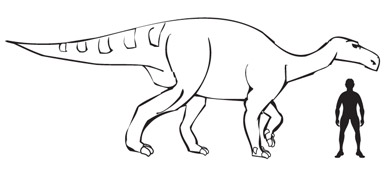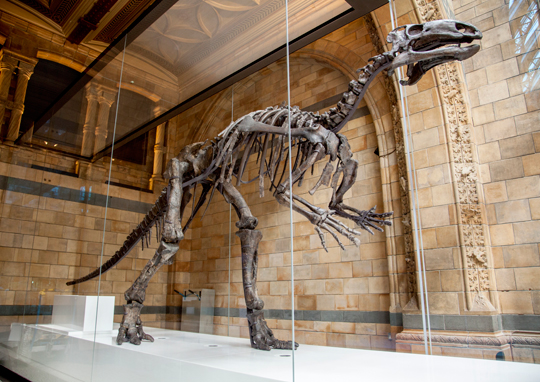Happy Birthday Gideon Mantell Many Happy Returns!
Happy Birthday Gideon Mantell
Today, February 3rd is the day on which Gideon Mantell, a doctor by training but also one of the very first palaeontologists was born. Gideon Mantell was born on this day in 1790. From his home in southern England, Dr Mantell was able to combine is medical duties with his passion for geology and fossils and often visited quarries and other promising sites whilst returning to his home after visiting patients. He named Iguanodon, the second member of the Order Dinosauria in 1825 and he made a considerable contribution to the early science of palaeontology. Over the years, he built up a very large collection of fossils, the great majority of which had to be sold when he fell upon hard times.
Sir Richard Owen, did attempt to take the credit for a lot of Gideon Mantell’s work, indeed the two men were bitter rivals. However, today the work of Gideon Mantell is not only highly respected but also his role in the study of the first dinosaur fossils is recognised.
Gideon Mantell
A memorial has been built to Dr Mantell, it is sited at Cuckfield, near Haywards Heath in West Sussex, England. It was from Cuckfield that many of the fossil remains of the Iguanodon were discovered. Dr Mantell received a sandstone block that contained an array of dis-articulated Iguanodon bones. This huge block of stone is on exhibit at the London Natural History museum, it has been nick-named the “Mantell-piece”.
An Illustration of an Iguanodontid

Picture credit: Everything Dinosaur
Iguanodon
The name Iguanodon means “Iguana tooth”, it relates to the fact that teeth associated with this genus resembled those of a modern Iguana. In fact the first reconstructions of this dinosaur depicted it as a huge lizard-like animal with an enormous tail. It was thanks to the research by scientists like Dr. Mantell, that it was finally realised for example, the forelimbs were shorter and smaller than the hind-limbs indicating a bipedal type of locomotion.
The genera that make up the Iguanodontidae family are currently under review, many specimens including the original holotype described by Mantell, are very incomplete and may represent very different dinosaurs. The Iguanodon anglicus as named and described by Mantell in 1825, had much of the description based on just fossil teeth. Fossilised reptile teeth unlike mammal teeth, are not distinctive enough to be used as the holotype specimen to name genera and species. Mantell’s description has come under increasing scrutiny.
Mantellisaurus atherfieldensis
His description may no longer be valid, but as Iguanodon is synonymous with this type of advanced ornithopod, the name is likely to remain in scientific use. Ironically, a new type of iguanodontid is recognised, fossils of a more lightly built type of Iguanodon have been discovered in southern England and more recently on the Isle of Wight. This animal has been named Mantellisaurus atherfieldensis in honour of Gideon Mantell, who helped start the Iguanodontidae ball rolling as it were. Today, we pay tribute to Gideon Mantell and his role in the development of palaeontology.
Mantellisaurus Fossil Exhibit on Display at the Natural History Museum London
Picture credit: Everything Dinosaur
Everything Dinosaur stocks several models of iguanodontids including a replica of Mantellisaurus in the CollectA Prehistoric Life range of figures: CollectA Prehistoric Life Figures.


